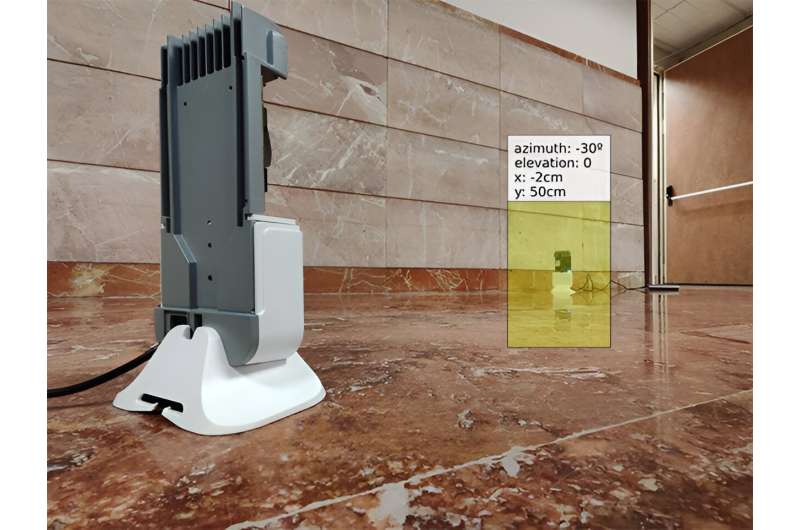This article has been reviewed according to Science X's editorial process and policies. Editors have highlighted the following attributes while ensuring the content's credibility:
fact-checked
trusted source
proofread
Scientists develop a high-precision router

Your next router will know where you're sitting. A team of researchers from two Madrid universities—Polytechnic (UPM) and Carlos III (UC3M)—has developed a prototype router with high positioning accuracy that allows them to know the exact location of a mobile phone.
It is well known that the police are able to locate a person by finding out which antenna their mobile phone is connected to. Specifically, by using three antennas, a mobile phone's location can be found. This technique is known as triangulation and has been used for years by the GPS technology we all have on our mobile phones. The main drawback of triangulation is that you need to have three antennas to find the mobile phone in question.
Researchers from the Polytechnic University of Madrid (UPM) and Universidad Carlos III de Madrid (UC3M) have been trying to find the location of a mobile phone with a single station for some time. Based on a new technology (called 802.11az), which offers more refined and accurate location capabilities, they have developed a prototype router that uses two WiFi devices and a positioning algorithm.
The prototype can find out the location of a mobile phone 7 meters away with errors of less than around 3 centimeters. In addition, it is able to use the bouncing of the WiFi signal off a wall so the station (or access point, or router) can find the mobile phone. The work is published on the arXiv preprint server.
It would be ideal to be able to locate a mobile phone using a single station, according to the researchers. But to avoid having to use triangulation, the signal from the antenna needs to be able to be very well targeted at the mobile phone it is searching for. And the only way to do so is by using antennas with high directivities operating at high frequencies.
Specifically, technologies like 5G/WiFi-7 can use frequencies higher than 20GHz that allow the antenna to be very well targeted at the mobile phone. In addition, high frequencies help to more accurately find out when the signal arrived. All of this makes high-frequency wireless networks the perfect candidate for locating the mobile phone with a single antenna.
Following a study that used WiFi to find out where a citizen with COVID had moved to, the team of researchers from UPM and UC3M set up a project to find the position of a mobile phone with a single station. They therefore came across the 802.11az technology known as next-generation positioning, which, among other things, specifies a new method for locating a mobile phone.
"In other words, this WiFi upgrade is designed to let your router know more accurately where you are," say the researchers. "The way it works is simple: The 60GHz antenna rotates until it locates you in front and then starts a measurement. During the measurement, the router sends several messages to which the mobile phone responds.
"Each of these messages includes the time it was sent, so the router is able to know how long the signal is in the air and find out how far away you are. The further away you are, the longer the signal is in the air."
When the UPM and UC3M researchers started working with 802.11az, the upgrade was still a draft pending approval by the international community. In other words, router manufacturers had no plans to incorporate the 802.11az upgrade.
However, Ph.D. students Pablo Picazo Martínez and Carlos Barroso Fernández created a prototype router, incorporating this upgrade, which uses two WiFi devices whose antennas emit at 60GHz (high frequency) and a positioning algorithm they have developed.
"The accuracy of our prototype demonstrates that future routers could find the location of a robot in a factory without the need for a camera or motion sensors, lowering costs in factories," the researchers say. "As well as knowing exactly where you are sitting in your house."
More information: Pablo Picazo-Martínez et al, IEEE 802.11az Indoor Positioning with mmWave, arXiv (2023). DOI: 10.48550/arxiv.2303.05996


















